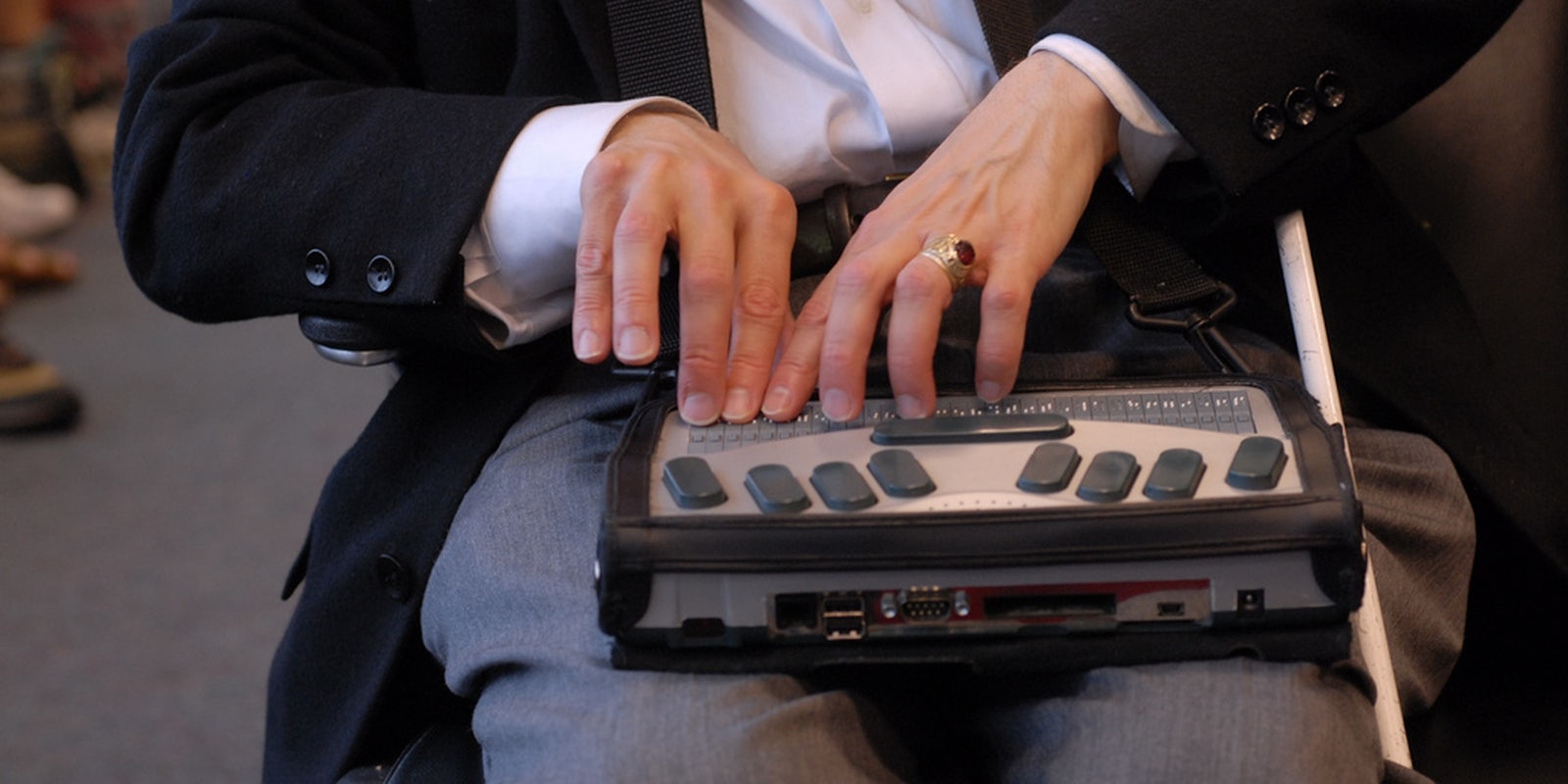App developers have a lot to worry about when building their product—how they will get people to use it, if the user interface is easy to comprehend, and whether or not people will like it enough to share with friends. But there’s one major piece that’s often missing from the development process: making apps and websites accessible to people with disabilities.
Thursday is Global Accessibility Awareness Day, aimed at helping coders and businesses think about ways of making their products accessible. “Accessibility,” means making software that is available to be used by everyone, including anyone that might have a disability that prevents them from seeing, hearing, or interacting with an application the same way an average user might.
Jennison Asuncion cofounded GAAD in 2011 after reading a blog post from Web developer Joe Devon asking the programming community to do more to make apps accessible. It has grown from just eight-or-nine U.S. events to more than 50 events spanning the globe.
“For me, the big win is if we can just get even a few developers, designers, and tech leaders to think about accessibility when they might not ordinarily do so,” Asuncion tells the Daily Dot. “That’s what global accessibility is about.”
According to Pew Research, 25 percent of American adults have a disability that interferes with their daily lives, and two percent of adults report having a disability or illness that makes it difficult or impossible to use the Internet. Just 54 percent of adults living with a disability use the Internet, compared with 81 percent overall.
Each event invites developers to ask questions (even the “stupid ones,” they might not feel comfortable asking otherwise), use a screen reader that demonstrates what it’s like to use the Internet as someone with a disability, and get their apps and websites checked by the community to see if there are any accessibility issues.
Asuncion knows firsthand how tough it can be for people with disabilities to use certain software, because Asuncion is blind. For years he’s been advocating for more tech companies to implement accessible features in their applications, and regularly reaches out to apps and websites that he has trouble using.
It was his proactive outreach that brought him to LinkedIn in 2013, where he’s now the leader of the accessibility team. He discovered an accessibility problem on the social network, and offered his feedback in person.
Asuncion works with product managers and other groups within LinkedIn to make sure software is accessible, and is helping to run a first-of-its-kind accessibility survey to gauge how people with disabilities and people that work to make software accessible use LinkedIn in their daily lives—and what can be improved.
After his many years of online experience, Asuncion says accessibility has dramatically improved, especially among large tech companies with the resources to develop apps and software for different groups of people. Apple, for instance, builds accessibility tech right into its software, making it easy for people to use their devices by voice or touch. There are multiple features people can toggle on or off under “General Settings,” which make changes to the device based on vision, hearing, guided access, or physical interaction preferences.
But there’s one group of people that overlooks the importance of accessibility, according to Asuncion. That’d be the startup crowd, which often fails to optimize products for everyone.
“I think startups are so focused on getting the minimal, viable product out there, that unless it’s a specific app that will be used by someone with disabilities, they won’t think about it immediately,” he says.
Asuncion says a fundamental temperature check to determine website accessibility is to unplug the mouse from the computer and see if a user can perform the primary interaction using only the keyboard. Mobile app developers should try using their apps with voice-over turned on, which acts as a built-in screen reader, and swipe around and use the app. Thanks to tools like Apple’s built-in accessibility function, it’s easy to figure out whether or not apps can be used by everyone.
Many startups won’t get past the first page of their product. But there are a number of resources, including those provided through GAAD, that help entrepreneurs learn how to make apps more accessible.
“I would say that by [making your app accessible] immediately, you’re opening up your app to the widest possible audience,” Asuncion says. “It’s going to be a lot less expensive and a lot less painful to design for and implement accessibility right away, as opposed to having to go in and rejig and potentially change your codebase.”
It’s not necessarily difficult to immediately make apps accessible for a disabled audience, but it requires actively thinking about the tools and resources required to provide the best experience for everyone. Asuncion is hoping that the annual conversation sparked by GAAD does just that—and makes accessibility more than just an afterthought.
Photo via holisticmonkey/Flickr (CC BY 2.0)



